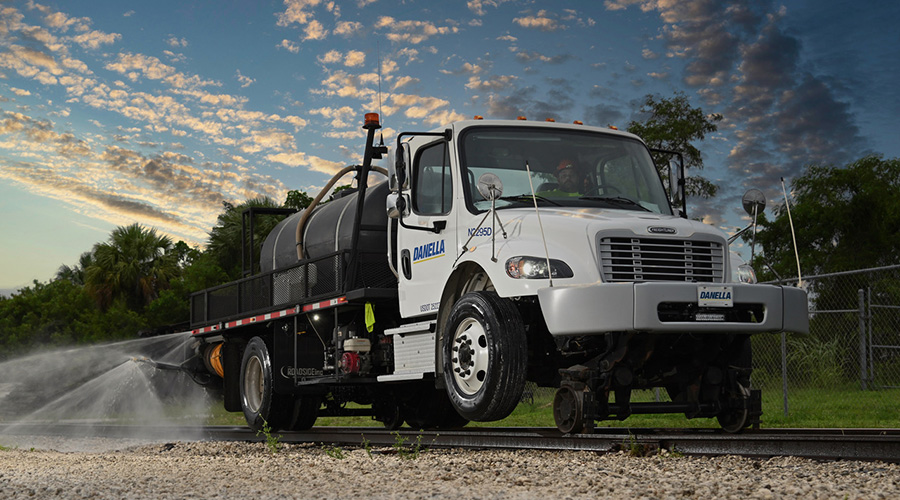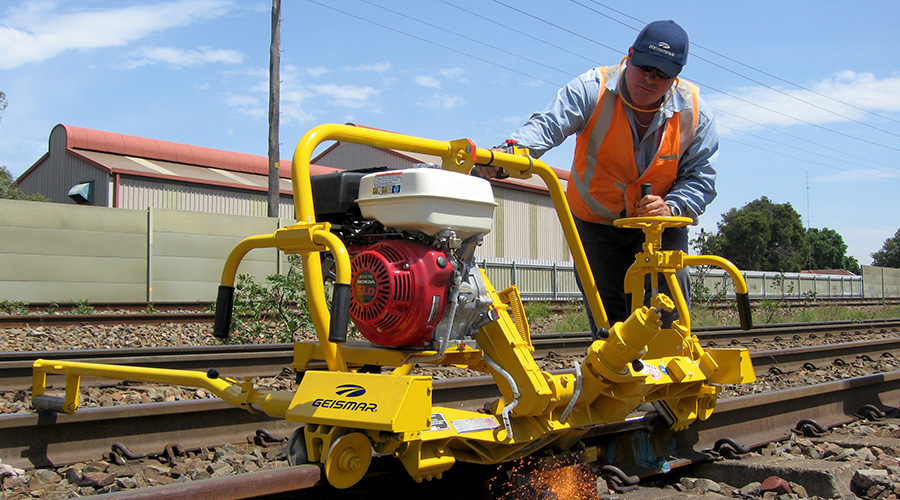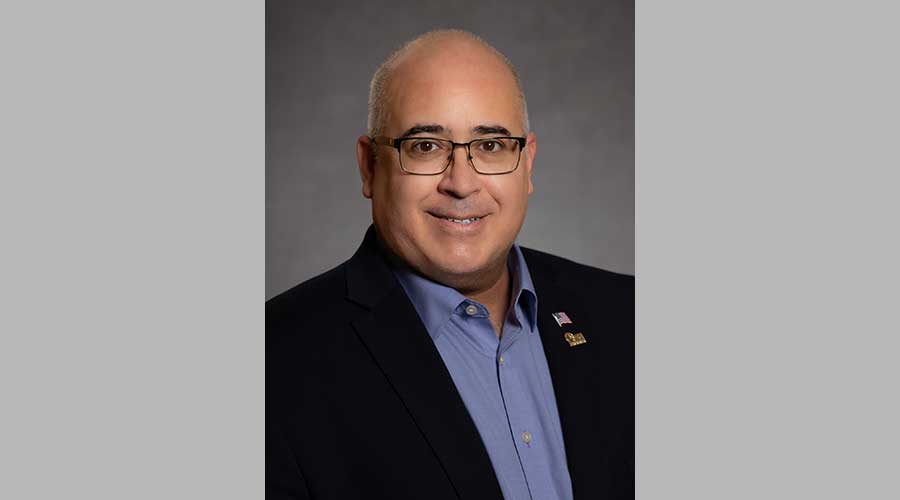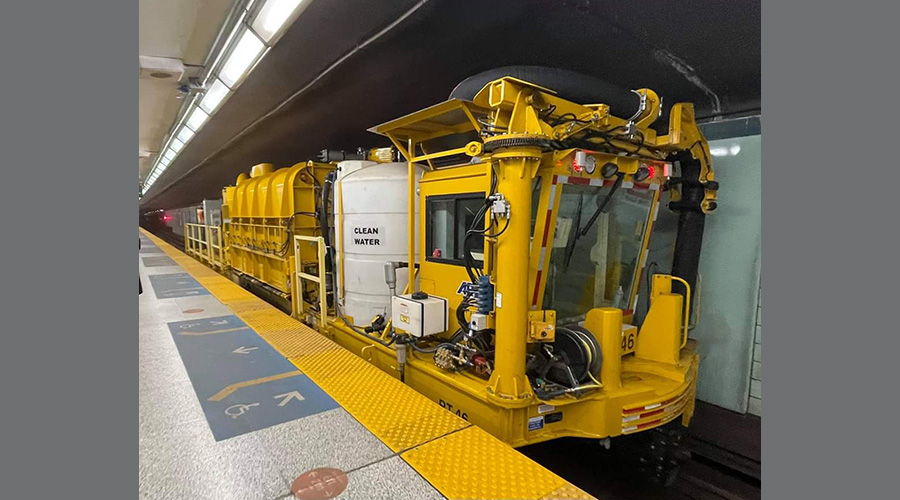Stay updated on news, articles and information for the rail industry
April 2024
Rail News: MOW
Technology update: Monitoring solutions 2024
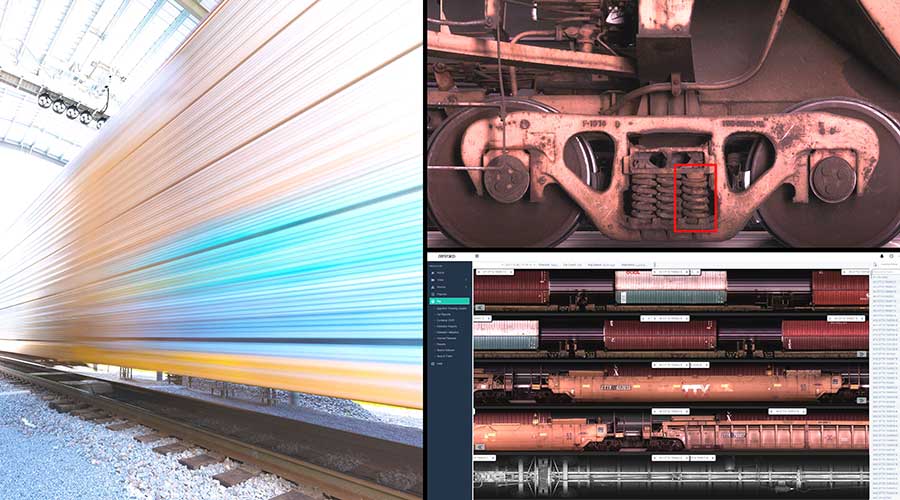
Compiled by Pat Foran, Editor-in-Chief
Duos Technologies Inc.
Duos Technologies Inc.'s rail-car inspection portal — RIP® — is an artificial intelligence (AI)-powered visualization and inspection solution that enables remote rail-car health monitoring in real time. RIP's edge-based "ultra-fast processing of data" allows users to identify and address current and potential equipment problems on freight and passenger rail cars before they become catastrophic, company officials said in an email.
CENTRACO®, RIP's intuitive user interface, provides an easy and thorough review of every rail car in the consist while highlighting what's important, company officials said. Advanced tools are available in the interface that enable users to explore close-up views of rail-car parts and offer perspectives "that can only otherwise be achieved by crawling under the rail car," company officials said.
In addition, CENTRACO offers a view into the detection history of each car, allowing inspectors to spot trends and patterns. And advanced notifications enable alerts to be sent in real-time via SMS, email or through a set of application programming interfaces.
Amsted Digital Solutions
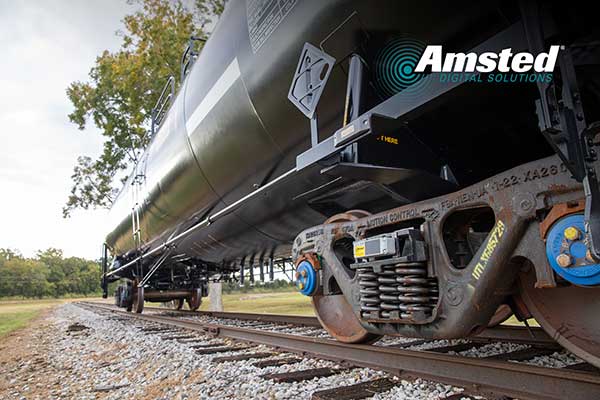
Amsted Digital Solutions’ IQ Series™ gateway, which features Bogie IQ® technology, is a maintenance free, low-power telematics device built to perform in the harshest freight-rail operating environments, company officials said. The gateway’s built-in capabilities, paired with advanced machine learning technology, essentially eliminates the need for specialized external sensors, company officials said.
When mounted on the body of “virtually rail car,” company officials said the gateway provides:
• dynamic ETA calculations and geofence entry and exit alerts for first- and last-mile validation; • accurate Load Status in Motion for precise loaded and empty mileage calculations;
• hand brake set and release detection; and
• impact detection.
When mounted on one or both bolsters of a bogie and configured with Bogie IQ technology, the gateway provides real-time onboard health monitoring in addition to the data available from the body-mounted gateway.
It also provides frequent monitoring for wheel slide events and wheel tread defects, and real-time monitoring of brake slide events
Actionable intelligence is available immediately through Amsted Digital’s scalable, flexible and secure Supply Chain Visibility™ platform, company officials said. As new features become available, existing gateways can be upgraded through over-the-air firmware updates to immediately unlock new capabilities.
Censys Technologies Corp.
A dynamic module of the CensWise™ AI/ML software platform, RailCens is designed for use in freight- and transit-rail environments, Censys Technologies Corp. officials said.
RailCens' applications can ingest image and sensor data from Sentaero UAS payloads and other system sensors, including payloads deployed on rail vehicles. The data can be uploaded and post-processed on a secure cloud-based server or connected to a Censys-provided edge computing inference engine and 4G / 5G streaming enabled to provide real-time alerts. Applications include: ROWCens, which is designed to identify and evaluate critical customer assets located on or near the right of way; VegCens, a geospatial analytics tool for vegetation management; TrackCens, which provides the ability to evaluate track and tie conditions, and develop predictive models for maintenance; CatCens, which provides a "top down" and "bottom-up" evaluation of the catenary system and its associated support infrastructure; SafeCens, which is deployed to evaluate the area adjacent to the right of way for safety and security; and CommonCens, a deep-learning-driven interoperability module that can combine multiple sources of georeferenced sensor data into a common operating picture for automated assessment and manual evaluation.
L.B. Foster
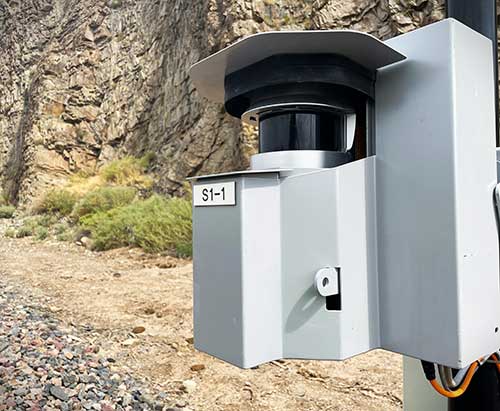
L.B. Foster offers Total Track Monitoring, a suite of technologies designed to ensure safe and efficient rail operations across a variety of conditions. It provides railroads with a real-time snapshot of operating conditions across their networks.
"The system tackles a range of environmental threats, including rockfalls and landslides, floods, and on-track anomalies through industry-leading technologies like the WILD IV Wheel Impact Load Detector," company officials said.
One component — Rockfall Monitoring — utilizes LiDAR technology and proprietary algorithms to detect and identify rocks and boulders that could pose a danger to trains. The system then notifies dispatchers, enabling them to manage traffic flow accordingly. Rockfall Monitoring automatically resets once the threat has been cleared.
Total Track Monitoring also incorporates Flood Monitoring, a fully wireless system designed specifically for railroads. The system detects high water levels and hazardous conditions in flood-prone areas and can be directly integrated into existing signal or dispatch systems for immediate response.
The WILD IV Wheel Impact Load Detector uses precision strain gauges to measure the impact, imbalance, weight and speed of passing wheels, providing data to help improve rail safety and reduce train delays. The WILD IV represents "a significant improvement" over its predecessor, the industry-standard WILD system, offering increased ease of maintenance and data accessibility, company officials.
Loram Technologies Inc.
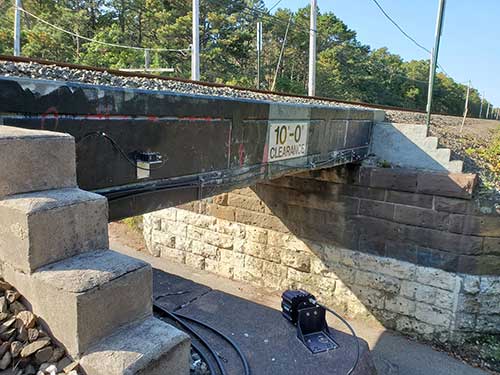
Loram Technologies Inc. (LTI) offers its line of SENSR products to deliver real-time, 24/7 alerting with actionable data and images from the monitored structure.
Powered by either standard AC or solar panels, the SGC1 gateway controller continuously sends minute-by-minute data from up to six connected devices over cellular data connection to the SENSRsi cloud. Each SR1 sensor continuously records biaxial tilt and triaxial acceleration measurements that give a detailed look at the movements of the structure. Tailored alerting thresholds can be set for each sensor for average tilt, dynamic tilt and vibration. Any exceeding threshold is automatically reported to the relevant parties within minutes via email, text message or automated phone call.
The SIM1 camera provides relevant visual feedback for any event the system detects; when employed for detecting vehicle impacts, this provides the bridge owner with a prompt, firsthand account of the event. With their diverse power sources and IP68 rating, SENSR products are versatile and durable enough for any real-time structural health monitoring application, company officials said.
Onyx Rail Safety Solutions

Onyx Rail Safety Solutions offers XING™, a system that provides 24x7 monitoring of critical areas, including grade crossings, yards, stations and platforms.
All XING-monitored locations are connected to an Onyx central workstation. The company's reporting platform provides a cross-section of information about the operation of a customer's assets to ensure smooth and efficient operations, company officials said. When the system identifies a hazard or other anomaly, a pre-programmed list of responders and stakeholders receive real-time notifications via text, email, and/or automatic phone calls. Periodic reports aggregate all anomalies from all XING-monitored locations over a user-defined time.
The system gathers data from an assortment of sensors (cameras, radar, LiDAR, etc.) to monitor defined locations. Railroad-specific AI created by Onyx, combined with a comprehensive set of business rules, is used to identify anomaly conditions and send alerts to workers at specific locations. Monitored anomalies include grade crossing violations, near misses, collisions, obstructions, missing warning equipment and warning equipment malfunctions.
Pedestrians, trespassers and railroad workers are also monitored and processed accordingly. The presence of smoke, sparks and fire is identified in real-time for prompt dispatch of emergency responders and resolution of the hazard, company officials said.
PS Technology
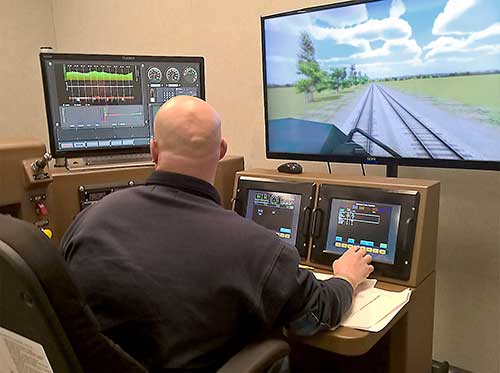
PS Technology (PST) has found a way to help increase line-of-road safety by utilizing existing locomotive event recorder (ER) monitoring and combining it with engineer training in simulators, company officials said.
PST's physics-based simulation engine allows for highly accurate train handling and event recreation, company officials said. At a railroad's request several years ago, PST began experimenting with ingesting ER data to re-create actual train incidents for playback and analysis, with the initial goals of preventing break-in-twos, stalls and train-handling derailments.
For incident recreation, actual ER and consist information can be loaded into the simulator, enabling engineers to practice with real-world handling results.
Multiple railroads have expanded their own ER monitoring programs to automatically capture ER data when an undesirable event happens, company officials said. If the event appears to be the result of train handling instead of a mechanical issue, the engineer from that incident is scheduled for simulation exercises to recreate what happened, and to learn ways to prevent future incidents.
In addition to improving engineer's safety from historic events in a controlled environment, some railroads are simulating and vetting both existing and new consist builds, company officials said. The thinking: Railroads can increase engineer train handling safety while also ensuring the planning and practice of safer operations prior to implementing new train make-ups.
The monitoring cycle then can begin again on the actual train runs for comparison against the pre-runs to keep the safety circle continually improving, company officials said.
Railway Equipment Co.
Railway Equipment Co. offers a wide range of remote monitoring products, including the recently introduced SMC Battery Charger, which is 60% more efficient than previous models, company officials said.
Rail-NET™ remote monitoring software enables real-time access to the status of equipment and data; it also allows users to view of historical data and sues information to determine bad or deteriorating cells, and remotely edit the charger's configuration.
Meanwhile, an automated grade crossing test monitors and records lights, gate arm position and individual battery cell voltages while under load without power from the charger. Information can be fed on-demand to railroads' central system via SNMP. Programmable settings allow for adjustment of the length of the test and load placed on batteries. The crossing test will immediately stop upon test-time expiration, crossing activation, low battery levels and detection of a fault.
The company also offers an external event recorder, which is compatible with existing crossing controllers for simple installation, company officials said. It can store up to 1,000,000 unique entries and is expandable up to 96 separate digital and analog inputs. Information also can be fed on demand to railroads' central system via SNMP.
Senceive
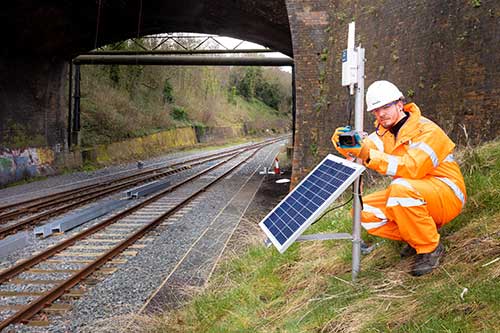
Weather conditions at remote locations now can be monitored and reported automatically via Senceive's wireless remote monitoring solutions.
Rail networks are experiencing an increase in disruption due to landslides caused by storms that reduce the stability of both engineered earthworks and natural slopes — the blockage of the United States' second-busiest intercity rail corridor in San Clemente, California, among the latest of such events, company officials said.
Smart monitoring solutions that can combine tilt sensors to detect shallow ground movement, geotechnical instruments to measure groundwater pressure and deep soil movement — and cameras that can send pictures to verify any events detected by the network of sensors before engineers can reach the site — can help mitigate this risk, company officials said.
The Senceive Infraguard™ system has been installed on a range of rail networks worldwide, with more than 30,000 tilt sensors installed at sites considered to be vulnerable to slope failure.
"Most landslides are caused by heavy rainfall, but not all heavy rainfall causes landslides," said Senceive rail monitoring specialist DJ Hogan. "By combining the collection of accurate weather and ground movement data, we can ensure that all stakeholders get early warning of potential problems."
TransmetriQ
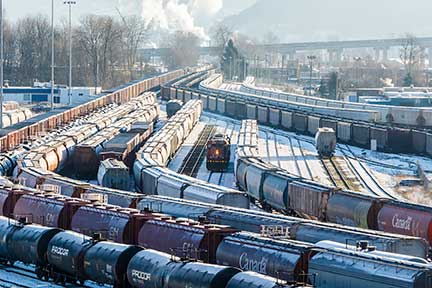
The current monitoring network includes both terrestrial and IoT devices assessing trains while in motion — including thousands of dragging equipment detectors, bearing temperature detectors, truck geometry measures and GPS, company officials said. A key component of monitoring is the industry's Automated Equipment Identification system, which identifies the car and the scan location.
Railroads daily gather millions of data points about cars in the North American rail network. That data is then housed by rail industry data repository Railinc.
With so much data housed across a variety of industry systems, it can be difficult for shippers to aggregate and create a complete picture of their fleet, company officials said. For example, an industry health alert will identify an issue, but it won't tell you where the car is, to which lease it is assigned, and more without searching additional systems, they said.
With Asset Manager from TransmetriQ — a Railinc brand — rail-car owners, lessors and users can make fleet management decisions with fully customizable information monitored by an automated assistant.
The information becomes "even more powerful" when combined with the TransmetriQ repair shop finder and planning tools that enable fleet managers to act on cars quickly and reduce time out of service, company officials said.
Trilogical Technologies
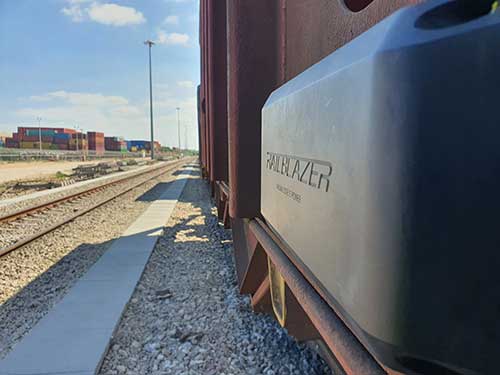
Trilogical Technologies has launched RailBlazer, which features advanced rail-car telematics. It converts each rail car into a digital asset, equipping fleet owners, railroads and shippers with "instant insights" into car location, condition and health, company officials said.
Powered by Trilogical's proprietary mesh technology, RailBlazer's Connected Railcars System connects all cars on a train and the locomotive without "setup hassles," company officials said.
Seamless synchronization forms a virtual network, providing real-time data on rail cars' positioning in the trainset; it also allows instant safety alerts on critical failures and end-of-train events with no cellular coverage dependency.
RailBlazer also allows real-time rail-car location monitoring with exact track positioning based on smart GNSS technology with advanced, proprietary filtering algorithms. Utilizing a highly accurate location module that incorporates multiple GNSS constellations and a data correction process, RailBlazer serves as a comprehensive solution for rail yard and depot management, company officials said.
The easy-to-mount, maintenance-free RailBlazer also features battery life of over six years, company officials said.
ZTR
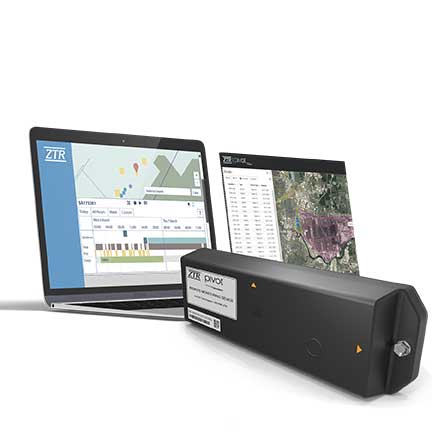
ZTR's Pivot is an advanced rail-car remote monitoring solution designed to deliver reliable data and insights that enhance safety, improve efficiency and lower rail-car operations costs.
Developed in collaboration with BlackBerry, Pivot combines telematics sensors with an IoT gateway device installed on rail cars to gather and transmit crucial data. It uses the data to offer a suite of features and functionalities, including location monitoring, impact detection, and door/hatch, load and handbrake status.
With Pivot, rail shippers, lessors, railroads and operators can enhance supply chain efficiency through accurate rail-car location tracking and data-driven logistics planning; optimize asset utilization by avoiding overuse and underuse of rail cars and refining the usage of current equipment; protect cargo and rail cars from mishandling, damage and unauthorized access; and reduce downtime and operational costs by proactively addressing incidents and maintenance needs.
Pivot has a battery life of up to eight years, with no reliance on solar or any external energy, and doesn't require cleaning, company officials said. The devices are built to withstand challenging rail conditions. Pivot's gateway can be installed anywhere on a rail car in less than 10 minutes, company officials said.
Email questions or comments to pat.foran@tradepress.com.


 LRW Honors Amtrak’s Acheson As Railway Woman Of The Year
LRW Honors Amtrak’s Acheson As Railway Woman Of The Year
 From Editor-In-Chief Foran: Of Gender Equity And Inclusion
From Editor-In-Chief Foran: Of Gender Equity And Inclusion
 Spotlight On Some Of Today’s Rail Safety Products
Spotlight On Some Of Today’s Rail Safety Products
 Women of Influence in Rail eBook
Women of Influence in Rail eBook
 railPrime
railPrime




